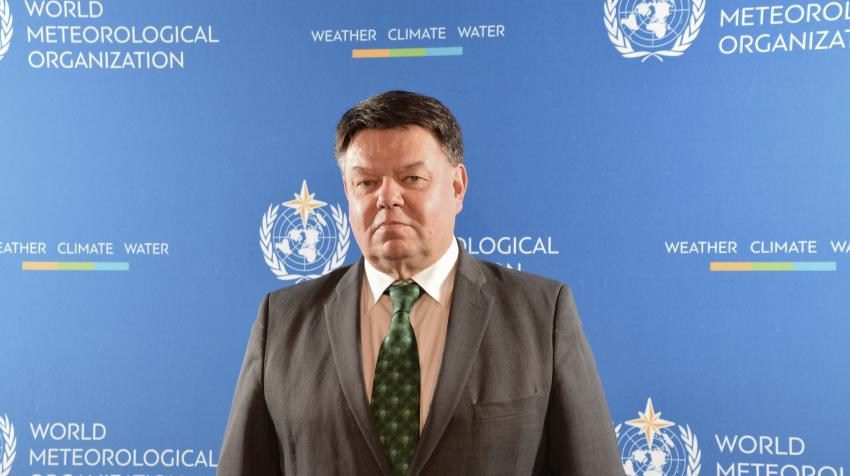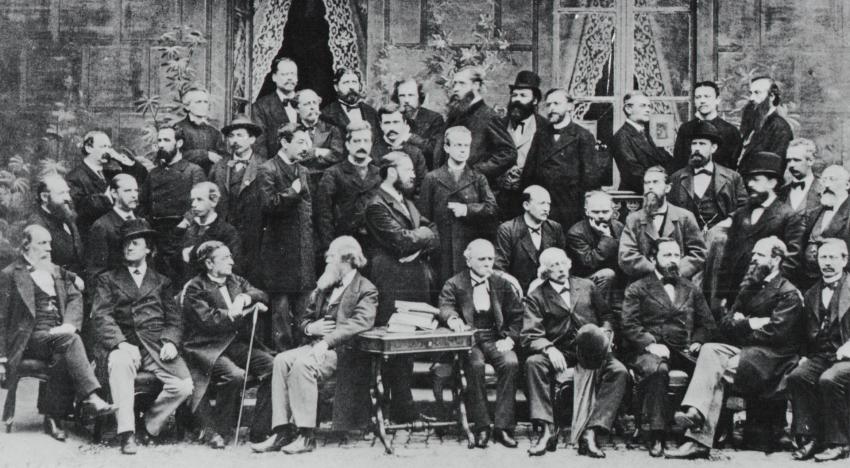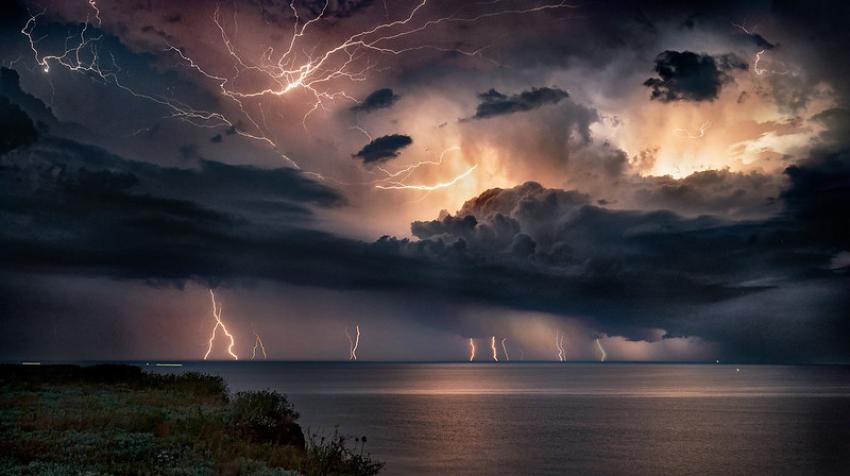23 March 2023
This year marks the 150th anniversary of the International Meteorological Organization—the forerunner to the World Meteorological Organization (WMO). It is also the 60th anniversary of the World Weather Watch, which is arguably just as important in our daily lives as the better-known World Wide Web.
We are the second oldest United Nations agency and are proud that we have set a gold standard for international cooperation. For the past 150 years, National Meteorological and Hydrological Services have collected and standardized data which underpin the weather forecasts we now take for granted. The history of WMO data exchange is a success story of scientific collaboration and coordination to save lives and livelihoods.
We started life in an era of Morse code and telegrams for shipping forecasts. Supercomputers and satellite technology are opening up new horizons for ever more reliable weather and climate prediction as part of an integrated Earth system approach.
World Meteorological Day on 23 March will therefore celebrate the many achievements of the meteorological community and look ahead to opportunities and challenges. Its theme is “The future of weather, climate and water across generations”.
Early Warnings for All
The decision-making World Meteorological Congress meets in May and will be focusing on future strategic priorities to promote our vision of a world that is more resilient to extreme weather, climate, water and other environmental events.
Our overriding top priority is the United Nations Early Warnings for All initiative, announced by United Nations Secretary-General António Guterres on World Meteorological Day 2022. We have received strong support from developed and developing countries alike. The United Nations Early Warnings for All Action Plan was launched during the World Leaders Summit at the United Nations 2022 Climate Change Conference (COP 27). It calls for initial new targeted investments of $3.1 billion to ensure that everyone on Earth is protected against dangerous weather by 2027.
This may sound like a lot, but it is the equivalent of just 50 cents per person per year, and the investments would be dwarfed by the benefits. This is a small fraction (about 6 per cent) of the requested $50 billion in adaptation financing. It would cover disaster risk knowledge, observations and forecasting, preparedness and response, and communication of early warnings.
WMO is partnering with the United Nations Office for Disaster Risk Reduction, the International Telecommunications Union and the International Federation of Red Cross and Red Crescent Societies to advance different pillars of the initiative.
The need is urgent. The number of recorded disasters has increased by a factor of five, driven in part by human-induced climate change and more extreme weather. This trend is expected to continue. Low-lying and highly populated urban areas are particularly vulnerable, especially given that many hazards have a compound and cascading effect.

Advances in forecasting and coordinated early warnings and early action have successfully slashed the number of weather-related deaths in the past 50 years. This was illustrated in the case of Tropical Cyclone Freddy, which hit Madagascar and Mozambique twice, in February and March of this year. The socioeconomic impacts have been massive but casualties were limited because of accurate and timely warnings.
Just 24 hours’ notice of an impending hazardous event can cut the ensuing damage by 30 per cent. The Global Commission on Adaptation found that spending just $800 million on such systems in developing countries would avoid losses of $3 billion to $16 billion per year.
Early warnings work, but they must work for everyone.
Half of WMO members still do not have adequate Multi-Hazard Early Warning Systems and we need to fill the gaps in the basic observing system, especially in Least Developed Countries and Small Island Developing States.
Early warnings are the low-hanging fruit of climate change adaptation—which is no long a luxury but a must. According to the World Economic Forum, in the next 10-year time frame, failure to mitigate climate change, failure of climate change adaptation and natural disasters are the highest risks for the global economy.
At least half of all disasters are water related. At the UN 2023 Water Conference in New York (22 to 24 March), WMO will show how water-related hazards like floods and droughts are increasing. Climate change and the melting of glaciers will also lead to more water stress. Better water monitoring and management are essential, and this is why WMO is working on a Global Water Information System to promote free exchange of hydrological data.
Greenhouse Gas Monitoring
Climate change is the defining challenge of our time. How we respond to that challenge will determine the future of our planet and of our children and grandchildren. This will be highlighted in the Synthesis Report of the Sixth Assessment Report of the Intergovernmental Panel on Climate Change.
The global average temperature is more than 1.1°C higher than it was when IMO was founded 150 years ago. Our weather is more extreme, our ocean is warmer and more acidic, sea levels have risen and glaciers and ice are melting. The rate of change is accelerating.

Atmospheric levels of greenhouse gases remain at record levels. And yet there is currently no comprehensive, timely international exchange of surface and space-based greenhouse gas observations.
To fill the void, WMO is seeking to develop a sustained and coordinated Global Greenhouse Gas Monitoring Infrastructure. The initiative would expand and consolidate the long-standing WMO activities in greenhouse gas monitoring under the auspices of the Global Atmosphere Watch and the Integrated Global Greenhouse Gas Information System.
But there are still uncertainties, especially regarding the role in the carbon cycle of the ocean, the land biosphere and the permafrost areas. We therefore need to undertake greenhouse gas monitoring within an integrated Earth system framework in order to be able to account for natural carbon sources and sinks, both as they currently operate and as they will change as a result of a changing climate. This will provide vital information and support for implementation of the Paris Agreement.
WMO would coordinate efforts within a collaborative international framework to leverage all existing greenhouse gas monitoring capabilities—space- and surface-based observing systems, all relevant modelling and data assimilation capabilities—in an integrated, operational framework, according to the resolution.
Many of the existing international and national activities dealing with greenhouse gases are supported mainly by the research community. At present, there is no comprehensive, timely international exchange of surface and space-based greenhouse gas observations or modelling products.
The concept for the new approach is based on the highly successful World Weather Watch, which was ushered in at the start of the satellite era.
Satellites and super computers have revolutionized weather forecasting. The future is exciting—we are looking to promote kilometre-scale climate modelling to better simulate cloud physics, future flooding and drought risks and, for instance, the speed of Antarctic glacier melting. There is a need for a consortium of countries with high-performance computer resources to meet such forecasting standards in the near future.
Our weather, climate and water cycle will be different in future than in the past. Weather, climate and hydrological services will help us tackle the associated challenges and seize the opportunities.
The UN Chronicle is not an official record. It is privileged to host senior United Nations officials as well as distinguished contributors from outside the United Nations system whose views are not necessarily those of the United Nations. Similarly, the boundaries and names shown, and the designations used, in maps or articles do not necessarily imply endorsement or acceptance by the United Nations.




